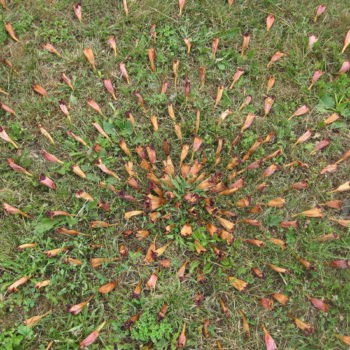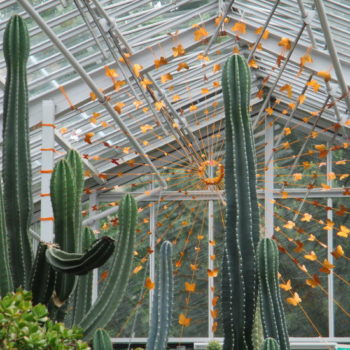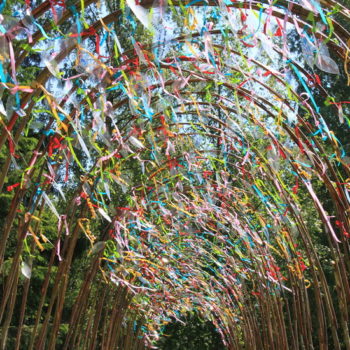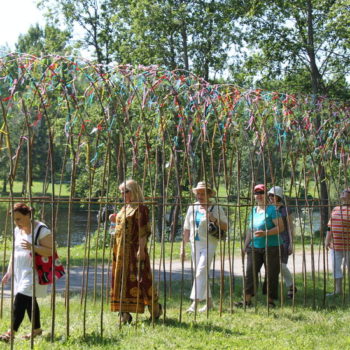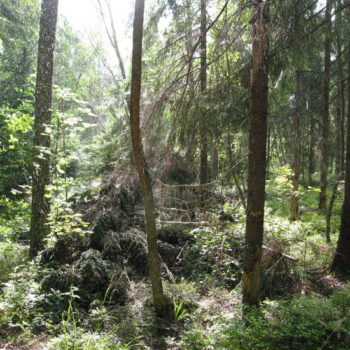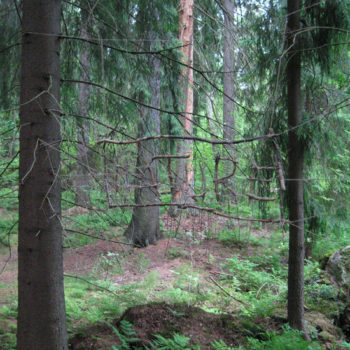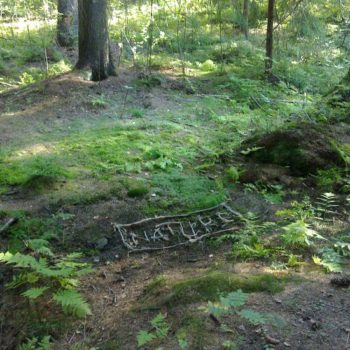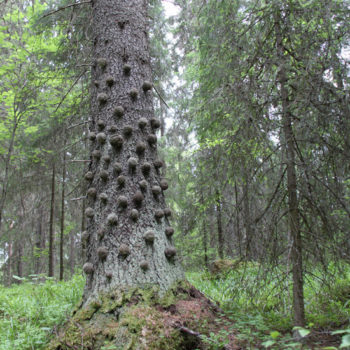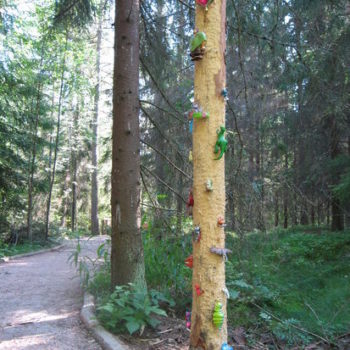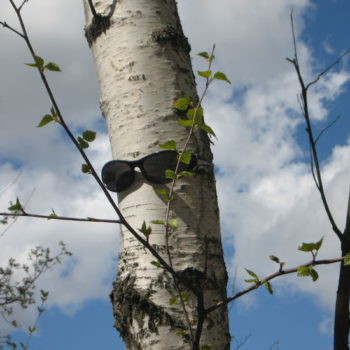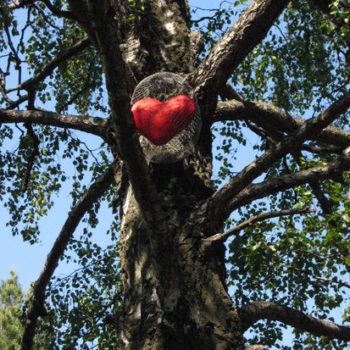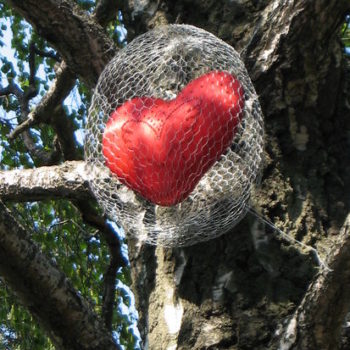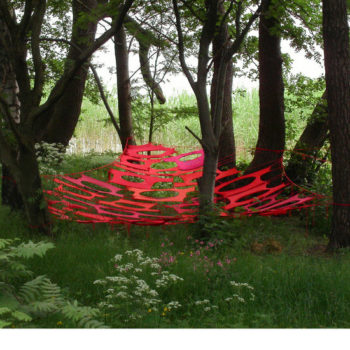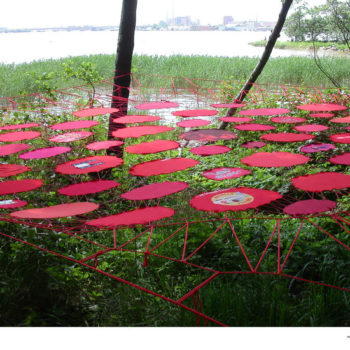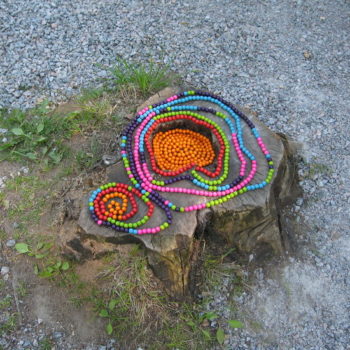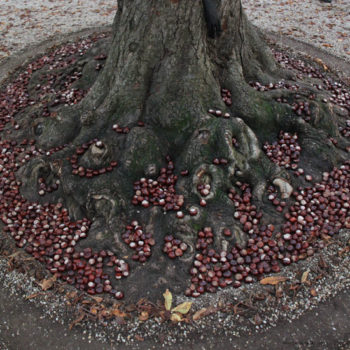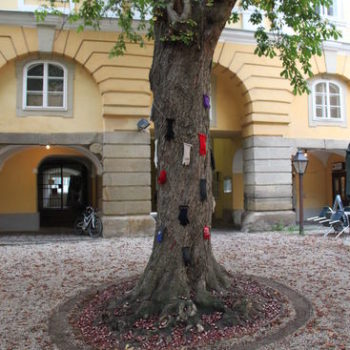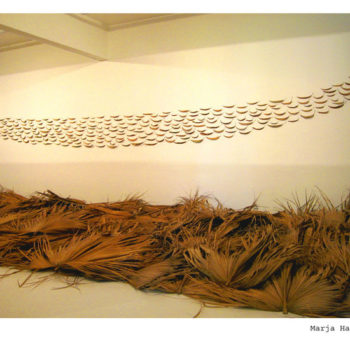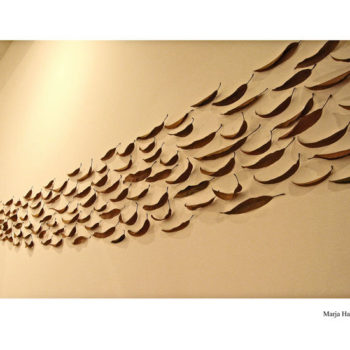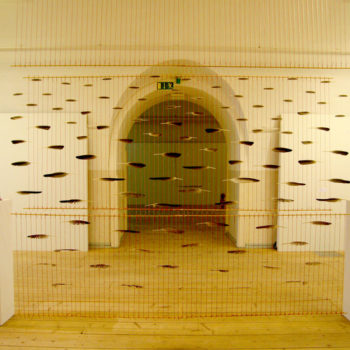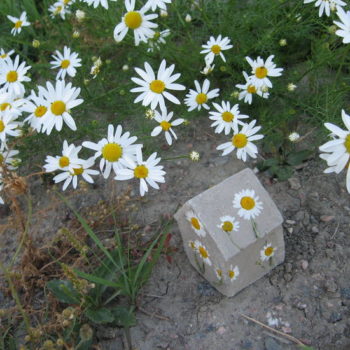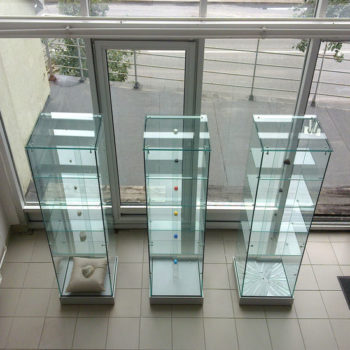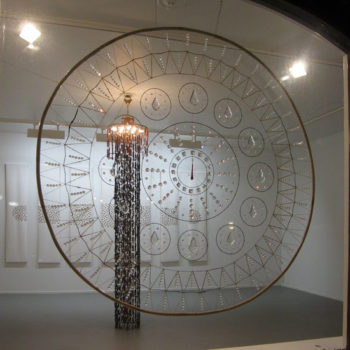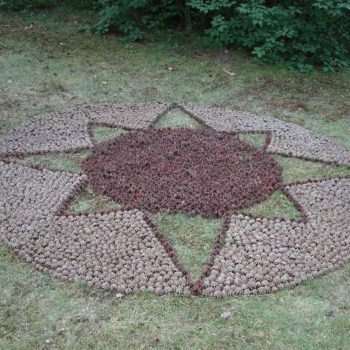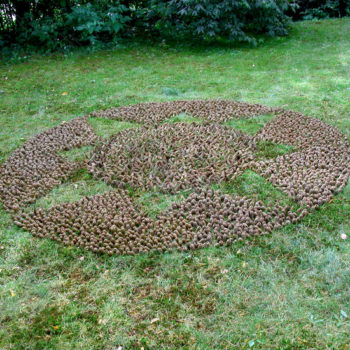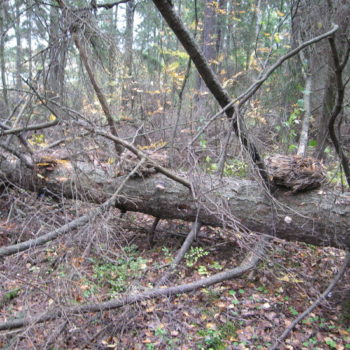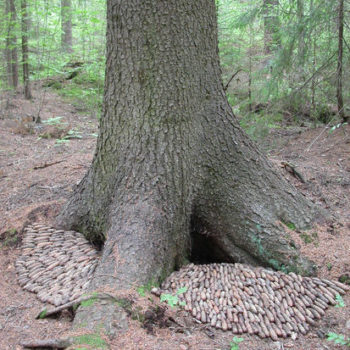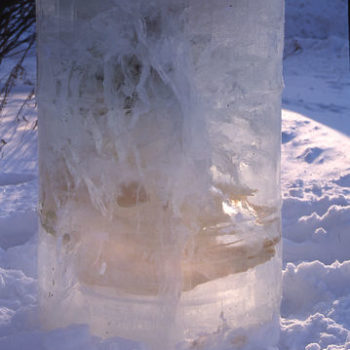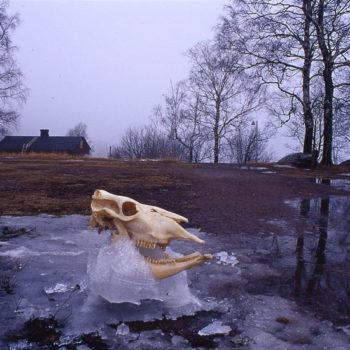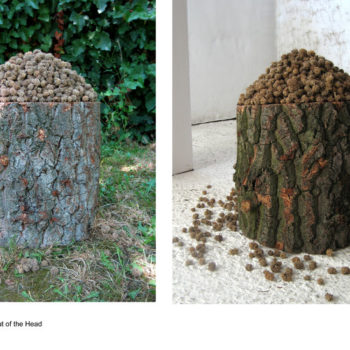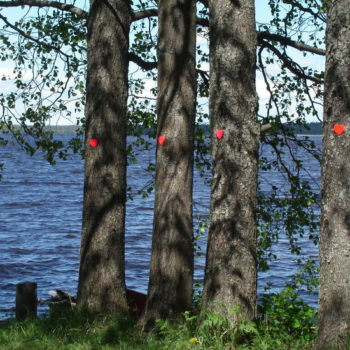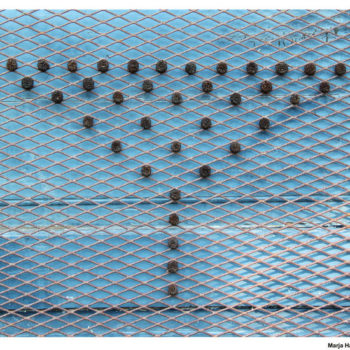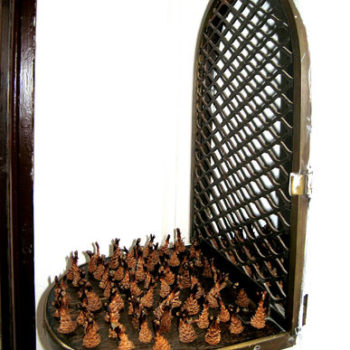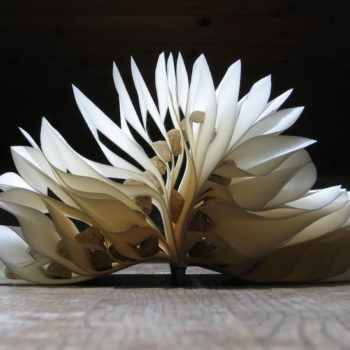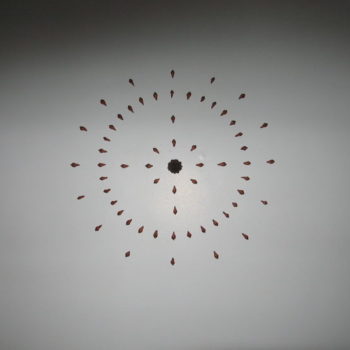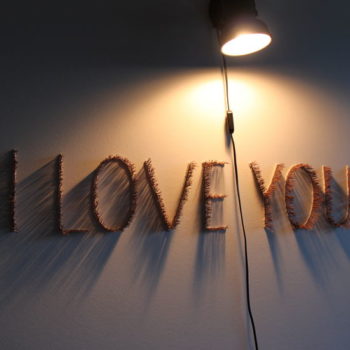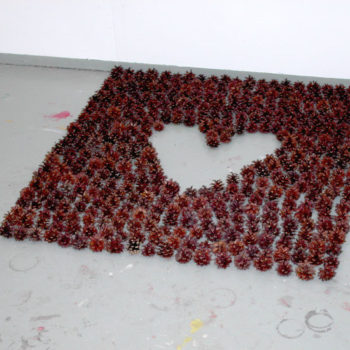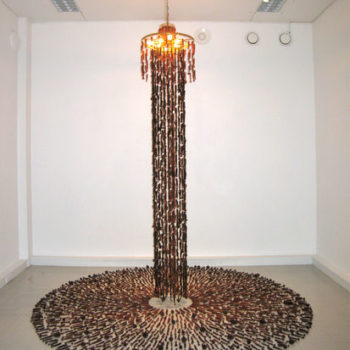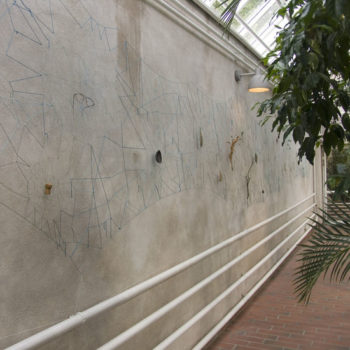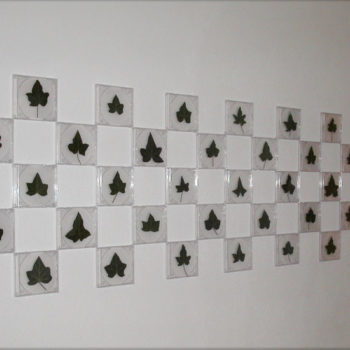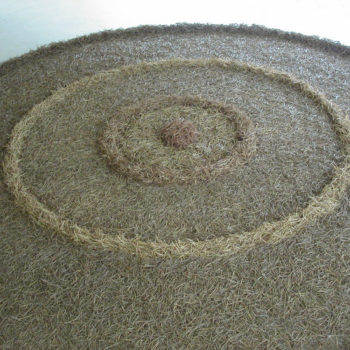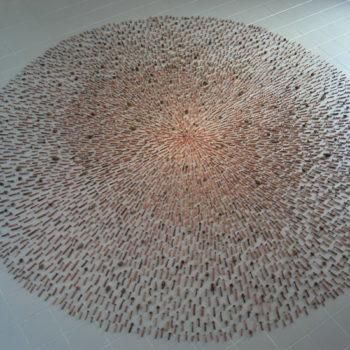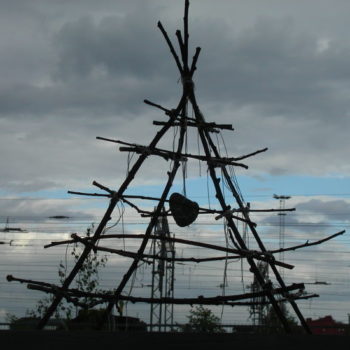Marja Hakala
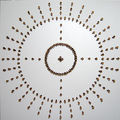
Basic information
b. 1947
Visual Artist, Painter, Installation Artist, Environmental Artist, Installation Artist
Residence: Helsinki
Contact information
Email: hakalamarja@gmail.com
Artist’s Statement
I work with the nature in many different ways - moustly environmental art
Marja Hakala
For Marja Hakala, art is a way to exist, and her works in recent years have often been environmental art and installations often in large scale. Hakala uses organic material, sometimes on a smaller scale sewing it onto the surface. Hakala’s international art manifests itself in both nature and the built cultural environment, and sometimes pops up at unexpected places. The method of working is usually slow, which is reflected in the wildernesskind of the artworks. Sometimes Hakala’s works are participatory, so the viewer can walk, for example, inside the particular work.
”Back to the nature” concept in Hakala’s art rises strongly to the front. Hakala compares in her art the relation of the natural order to human cultural order. The viewer may experience a strong feeling of nature, as well as her works reminds us that nature is not a chaos. Hidden the allencompassing natural plan and mans part of it, is kind of the subject in Hakala’s works. Hakala wants the viewer to be glad of the nature as much as the artist herself, and to show with her works a gratitude to the nature.
The artist brings natural materials inside and move ready-made items to the nature – such as old toys. She has collected the objects from the recycling places such as flea markets, and Hakala’s intention is to emphasize the respect for nature and man’s relationship to his original environment. She offers the refused objects or natural material a new life as part of a work of art. That is why at the case of her art, it is difficult to say whether the nature is a gallery or is the gallery transformed into a part of the natural environment.
Hakala’s art is a dialogue with nature. Respect is already reflected in the way of working, where Hakala doesn’t even bend the branches of trees, but collects the accumulated material from the ground. Nature is an endless treasure trove of artistic material, from where it is good with appreciation to draw.
When organizing the natural material, Hakala uses a lot of symmetry, and the works forms an abstract image like a puzzle, where the pieces fall into the place supreme. Repetition and seriality as well harmony and form are the keywords of artistic interpretation of Hakala. The viewer can see through Hakala’s works, the environment with the new eyes. In the articles of nature you can see a lot of interesting colours, shapes and textures, with include the repetition and similarity of the works without being mathematically precise. Small differences are important: none of the cone, leaf or twig – as no man – are not the same in the end, even through they resemble one another. In the background of Hakala’s art may lie hidden an individualistic ideology.
On the other hand, Hakala cuts the natural material in her works and the composition of cut material forms as one of the sources of beauty and aesthetics. The result is for example the series of shapes of nature, partially clothed in the geometric shapes, which may get through the expression perspective and kinetic aspects. Hakala’s circle works have been iterpreted as a mandala-patterns, which in Sanskrit means symbolically or methaphysically cosmos, the universe.
Hakala has mixed technique in the sense that it combines the arts and crafts, which is subordinate to the arts. Technology does not determine, but an artistic expression. Hakala does not want to run after an artistic trend, but to be faithful of her own way of making and expression. Anticommercialism is strongly present. Environmental art is often not permanent, and thus not even available for sale.
Previously, Hakala has done a lot of graphic art. Multiannual croquis-drawing in Outi Heiskanens studio, and the old love, the revival of painting and studious photographing parallel today with other artistic work.
SAMI AIKIO, MA
Marja Hakala
For Marja Hakala, art is a way to exist, and her works in recent years have often been environmental art and installations often in large scale. Hakala uses organic material, sometimes on a smaller scale sewing it onto the surface. Hakala’s international art manifests itself in both nature and the built cultural environment, and sometimes pops up at unexpected places. The method of working is usually slow, which is reflected in the wildernesskind of the artworks. Sometimes Hakala’s works are participatory, so the viewer can walk, for example, inside the particular work.
”Back to the nature” concept in Hakala’s art rises strongly to the front. Hakala compares in her art the relation of the natural order to human cultural order. The viewer may experience a strong feeling of nature, as well as her works reminds us that nature is not a chaos. Hidden the allencompassing natural plan and mans part of it, is kind of the subject in Hakala’s works. Hakala wants the viewer to be glad of the nature as much as the artist herself, and to show with her works a gratitude to the nature.
The artist brings natural materials inside and move ready-made items to the nature – such as old toys. She has collected the objects from the recycling places such as flea markets, and Hakala’s intention is to emphasize the respect for nature and man’s relationship to his original environment. She offers the refused objects or natural material a new life as part of a work of art. That is why at the case of her art, it is difficult to say whether the nature is a gallery or is the gallery transformed into a part of the natural environment.
Hakala’s art is a dialogue with nature. Respect is already reflected in the way of working, where Hakala doesn’t even bend the branches of trees, but collects the accumulated material from the ground. Nature is an endless treasure trove of artistic material, from where it is good with appreciation to draw.
When organizing the natural material, Hakala uses a lot of symmetry, and the works forms an abstract image like a puzzle, where the pieces fall into the place supreme. Repetition and seriality as well harmony and form are the keywords of artistic interpretation of Hakala. The viewer can see through Hakala’s works, the environment with the new eyes. In the articles of nature you can see a lot of interesting colours, shapes and textures, with include the repetition and similarity of the works without being mathematically precise. Small differences are important: none of the cone, leaf or twig – as no man – are not the same in the end, even through they resemble one another. In the background of Hakala’s art may lie hidden an individualistic ideology.
On the other hand, Hakala cuts the natural material in her works and the composition of cut material forms as one of the sources of beauty and aesthetics. The result is for example the series of shapes of nature, partially clothed in the geometric shapes, which may get through the expression perspective and kinetic aspects. Hakala’s circle works have been iterpreted as a mandala-patterns, which in Sanskrit means symbolically or methaphysically cosmos, the universe.
Hakala has mixed technique in the sense that it combines the arts and crafts, which is subordinate to the arts. Technology does not determine, but an artistic expression. Hakala does not want to run after an artistic trend, but to be faithful of her own way of making and expression. Anticommercialism is strongly present. Environmental art is often not permanent, and thus not even available for sale.
Previously, Hakala has done a lot of graphic art. Multiannual croquis-drawing in Outi Heiskanens studio, and the old love, the revival of painting and studious photographing parallel today with other artistic work.
SAMI AIKIO, MA
Current information
galerie Papu, Helsinki24.7.17
Arteground Art Festival 18.8.-31.8.17
Viljandi, Viro

